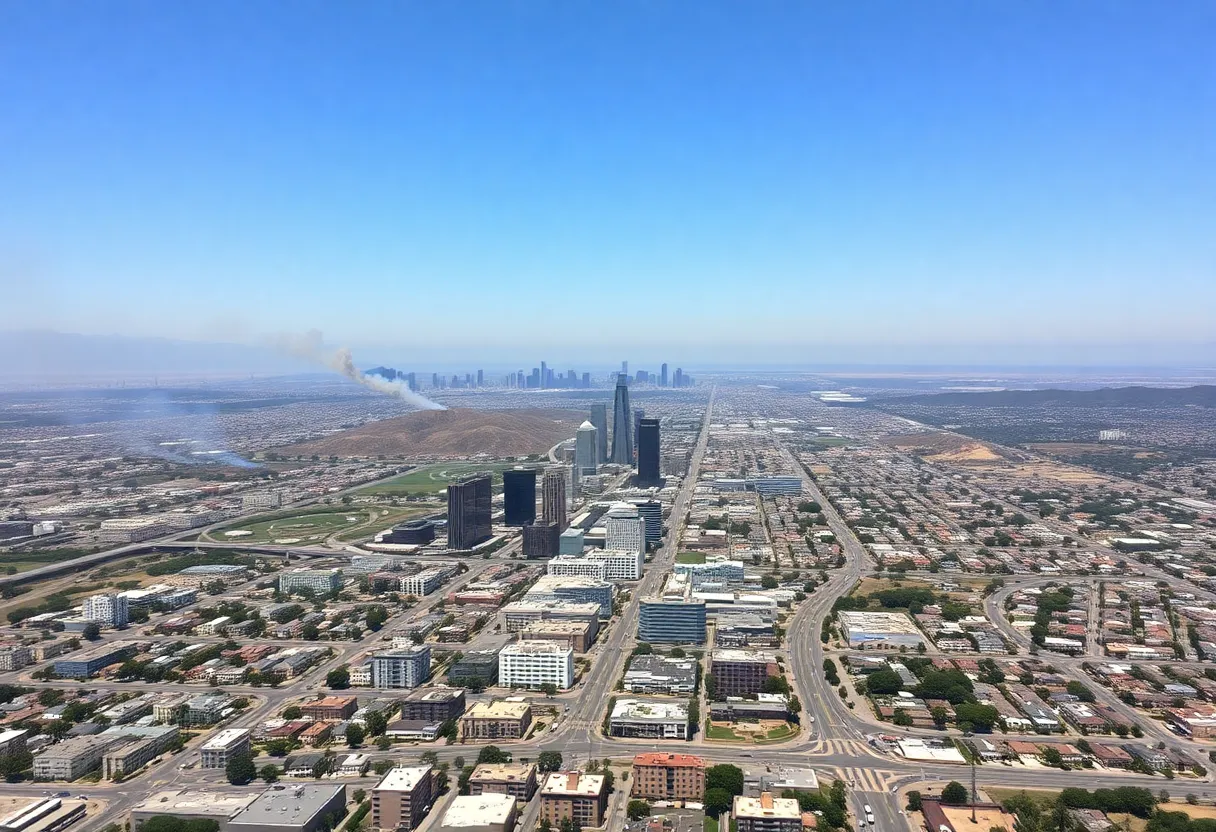News Summary
Los Angeles faces significant rebuilding challenges after devastating wildfires, amid a projected budget deficit of nearly $1 billion. Mayor Karen Bass is seeking $1.9 billion in state support for recovery initiatives. New wildfire hazard maps show a 29% increase in high-risk areas, highlighting the urgency for homeowners to assess fire dangers. As recovery begins, concerns about the slow permitting process and economic impacts are prevalent, with losses estimated between $28 billion and $53.8 billion in property damage. Officials emphasize resilient rebuilding strategies to strengthen the community against future risks.
Los Angeles Wildfires Ignite Urgent Rebuilding Efforts
Los Angeles is currently in the midst of a challenging situation as the region grapples with severe budget constraints, a projected deficit of nearly $1 billion looming for the next fiscal year. The need for immediate action is crucial, especially after devastating wildfires left their mark on the beautiful city and surrounding areas.
State Leaders Rally for Support
In a recent trip to Sacramento, Mayor Karen Bass met with state lawmakers, and together they are requesting a substantial $1.9 billion in support for recovery efforts. This financial backing will be instrumental in addressing the extensive damage wrought by the wildfires, which have impacted numerous communities. The urgency for recovery is more pressing than ever, given that millions of acres across California have been marked as “very high hazard” due to fire risks.
Introducing New Wildfire Hazard Maps
In a significant move, Cal Fire has released new wildfire hazard maps for Los Angeles, Riverside, San Bernardino, and Orange counties—the first update in 14 years. These maps present a stark picture, showcasing a dramatic 29% increase in “very high hazard” zones in the Greater Los Angeles area, now encompassing a staggering 900,000 acres. For 43 new cities in the area, this categorization brings heightened awareness to fire risks.
The maps reflect urgent changes in our climate and the need for residents to take proactive steps. Homeowners and local officials are encouraged to recognize and assess their risks, particularly as 90% of homes in wildfire-prone zones were built before the implementation of modern fire-resistant building codes.
Preparedness Starts at Home
For those living in these high-risk areas, another layer of responsibility has emerged. Homeowners are mandated to clear brush and flammable vegetation within 100 feet of their homes to help reduce the risk of fire spread. With new development in these zones, adherence to California’s fire-resistant building material regulations is non-negotiable.
Moreover, as recovery efforts kick off following wildfires that struck in January, the City of Los Angeles finds itself in a position where only four permits for rebuilding in affected neighborhoods like Pacific Palisades have been approved. Over 6,800 homes were significantly affected, some suffering complete destruction.
Concerns About the Permitting Process
The slow pace of the permitting process has raised eyebrows, with many eager residents frustrated by the delays. As they strive to recover, a $10 million consulting contract for recovery efforts has attracted criticism, particularly in light of the city’s budget issues.
Widespread Economic Impact
The wildfires have taken a toll beyond just physical damage. Experts estimate that property damage and losses could fall between $28 billion and $53.8 billion in Los Angeles County alone. Moreover, the aftermath of the wildfires has led to significant job losses, with up to 49,110 job-years gone in key industries.
Local, state, and federal governments are also facing substantial tax revenue losses, projected to fall between $730 million and $1.4 billion. This economic fallout underscores the extensive reach of the wildfires and the need for coordinated recovery efforts.
Path Forward with Hope
Officials stress the necessity of rebuilding with resilience in mind, emphasizing that homes must be constructed to withstand future fire risks. A new wildfire task force is underway, focusing on recovery roadmaps that promote faster rebuilding processes and improved emergency response systems. As they move forward, there’s hope that these strategies will help the L.A. area not only recover but emerge stronger than before.
In this time of rebuilding, community connections and collective action will play a crucial role in restoring the city’s vibrancy and fortifying it against future challenges.
Deeper Dive: News & Info About This Topic
- ABC7: New Fire Hazard Maps for Los Angeles
- Wikipedia: Wildfire
- New York Post: L.A. Approves Rebuilding Permits
- Google Search: Rebuilding after wildfires California
- LAist: Rebuilding Fire-resistant Homes in Los Angeles
- Encyclopedia Britannica: Los Angeles
- Deadline: Wildfire Impact on Pacific Palisades
- Google News: California wildfires 2025
- ABC News: L.A. Wildfires and Text Messages
- Architect’s Newspaper: Rebuilding in Fire-Prone Areas








